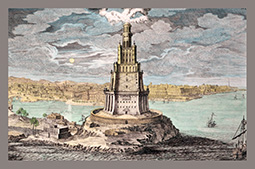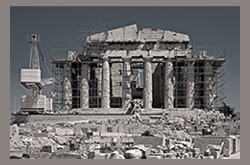Autore: F. Fariello
Scarica l’articolo in formato .pdf: The Seven Wonders of the Ancient World and their perception in the mirror of some Chinese sources: two examples
 Il contributo mira a illustrare alcuni casi di ricezione del patrimonio culturale greco ed ellenistico, in particolare, di due monumenti considerati parte delle Sette Meraviglie del mondo antico: il Faro di Alessandria e il Colosso di Rodi, attraverso un’analisi comparativa tra le fonti cinesi e le “fonti delle fonti cinesi”: con particolare attenzione alle fonti greche e romane, che costituiscono la prima bibliografia della tradizione narrativa dell’Occidente in lingua cinese.
Il contributo mira a illustrare alcuni casi di ricezione del patrimonio culturale greco ed ellenistico, in particolare, di due monumenti considerati parte delle Sette Meraviglie del mondo antico: il Faro di Alessandria e il Colosso di Rodi, attraverso un’analisi comparativa tra le fonti cinesi e le “fonti delle fonti cinesi”: con particolare attenzione alle fonti greche e romane, che costituiscono la prima bibliografia della tradizione narrativa dell’Occidente in lingua cinese.
The paper aims to illustrate some cases of the reception of Greek and Hellenistic cultural heritage, in particular, of two monuments considered part of the Seven Wonders of the ancient World: the Lighthouse of Alexandria and the Colossus of Rhodes, through a comparative analysis between Chinese sources and the “sources of the Chinese sources”: with special attention to the Greek and Roman sources, which constituted the first bibliography of Chinese narratives about the West.

